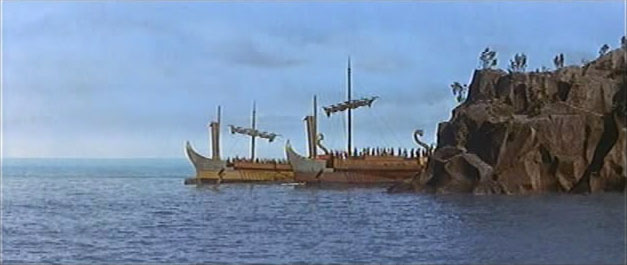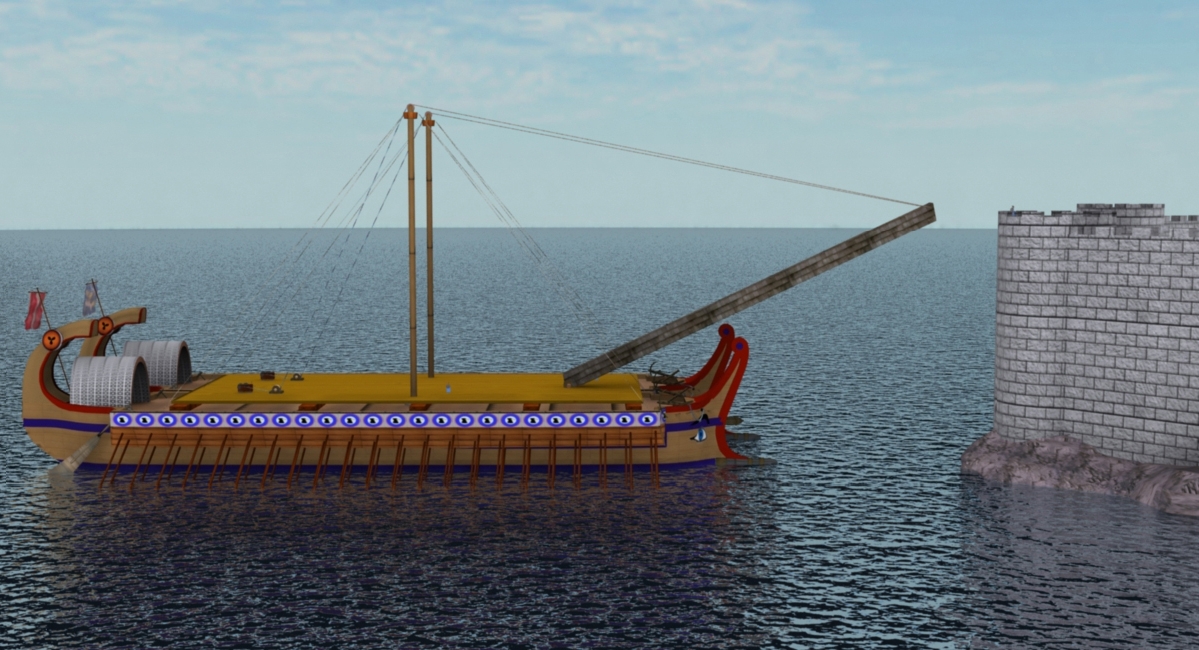Apologies for the delay, I've been reading "Cartgage: A History" By Serge Lancel in order to get a better understanding of Carthaginian institutions and society before I moved on going in depth on Carthage. I also decided to split this update in two, since it's very long. Enjoy.
CHAPTER VII: ON THE CUSP OF GREATNESS
PART II: THE SIEGE OF AKRAGAS
Being born to a long line of rulers of Makedonia, one would be forgiven for expecting Alexandros to follow in these footsteps. The decline of the Argeads in the years following the death of Amyntas III, which saw internecine infighting and civil war between just about every person with the slightest claim to the throne accelerated the swift decline of any central Makedonian state authority over their rugged mountain subjects. More importantly, it encouraged intervention by outside powers who looked to profit from the situation. Whether it was the southern Hellenic polities such as Athenai, Thebai, and Sparta looking to impose their own puppet ruler, or the barbarians to the north such as the Illyroi and Paenoi seeking easy loot, the rulers of Makedon had lost all control over their kingdom.
It was Jason of Pherai’s intervention and the crowning himself Basileus following Ptolemaios’ attempted coup that arguably saved Makedon from complete collapse and dissolution. Jason re-established and reformed centralized control over the people of the Makedonian interior, vanquished Makedon’s enemies, and trained her citizens into a highly effective and efficient fighting force. In the process however, he sidelined the last true legitimate Argead heir to the Makedonian throne, Philipos, promising him the succession upon his death publicly, but privately looking to do away with him when he felt secure enough to take that chance.
Philippos of course occupied himself during these years by accompanying Jason everywhere he went, ostensibly to give him experience for when he was to take over as Basileus, but in reality serving as a means for Jason to keep an eye on him at all times. He served as a useful political tool, allowing Jason to cement an alliance with the Molossian house ruling Epeiros through a marriage with Olympias.
Following the death of Jason, few were surprised when Philippos conveniently ended up dead shortly thereafter, since it removed any adult male heir holding a legitimate claim to inheriting Jason’s empire standing in their way of taking it all for themselves. Olympias soon fled to Epeiros with their infant son Alexandros, where there were offered refuge by the young Basileus, Alexandros I. Alexandros, who was busy fighting a series of wars with the rulers of Thrakia and Thessalia for control of Makedonia, agreed to making Olympias’ son his heir, hoping that would remove his nephew from otherwise being a potential rival to his rule.
In the series of wars that followed, Alexandros’ forces would wax and wane, but crucially, he would achieve little lasting success. Although his defeat of Andronikos at Orraon in 427 [349 BCE] led to a successful invasion of Makedon, he struggled to impose his will over Upper Makedon, and his gains were reversed when Kersobleptes was able to finally assemble an invasion force and push him out in 433. Alexandros returned from this war increasingly frustrated, and more importantly, increasingly suspicious of his sister and her son. He feared his defeat placed his hold on power in a tenuous position, and so he sought to pre-emptively remove what he believed to be the main rallying point for any opposition, his young nephew.
In a famous anecdote from history that comes down to us, Olympias was ticked off to the attempted assassination when one of the assassins, sympathetic to Olympias and her son, deliberately dropped his dagger as he approached her chamber, allowing her to hear them coming and make a daring escape with Alexandros out of a second entrance. From there she fled to the court of Kersobleptes, who was all too happy to welcome such a useful asset into his realm.
Kersobleptes, not wanting to waste his opportunity to overthrow a rival in favor of a child, lent them an army of 10,000 to invade, and successfully procured the support of the Aitolians for Alexandros’ claim to the throne. The two armies united outside Kassope, and at the battle that followed they soundly defeated Alexandros I, capturing him and executing him after his soldiers defected. Alexandros Argead was crowned Basileus Alexandros II of Epeiros, with Olympias acting as the de facto regent for her now 14 year old son.
The Aitolians meanwhile began to enjoy their newfound role as kingmaker. After their smashing success with Epeiros, they lent their support to Demetrios’s cause in Thessalia. Over a period of two years, Demetrios, assisted by the Aitolians, eventnually defeated and conquered the lands of Andronikos, forcing him to flee across the Aegean into the realm of Antipatros. Demetrios, buoyed by his victory, then proceeded to turn south and pre-emptively struck his former benefacters in Thebai. In a lightningly swift turnaround from his position a few years previously, Demetrios and the Aitolians shattered the Theban army and subdued Thebai and the whole of the Boiotian League.
This was the state of affairs when Alexandros II reached his majority, the very same year Demetrios and Kersobleptes partitioned Makedon between them. Alexandros had been left out completely, and he swiftly came to the conclusion that he was left no room for glory and greatness in the peninsula. He looked eagerly at developments in the west, always also keeping a sharp eye on affairs to his east lest any new developments arise that he could exploit. A war with Demetrios stretching from 438-441 [338-335 BCE] was successful enough in regaining territory lost by his predecessor, and was enough to at least make him a nuisance to Demetrios’ ever growing ambitions. However this was not enough to satisfy his lust for adventure and glory, so when the Syrakusans envoys came begging him for assistance, Alexandros jumped at the chance.
He threw himself at the task with all his energy and enthusiasm. Using this as an opportunity to paint it to his rivals as the chance to get him out of their hair for good, he succeeded in obtaining ships and men from Kersobleptes, Demetrios, and the Athenians, bolstering his forces enough for him to be confident in his chances of success. Alexandros left Ambrakia early in 443, accompanied by 15,000 soldiers and 60 war vessels, mostly triremes and a small number of outdated penteconters.
His force was large enough to break the blockade, and by the time of his landing, Gisgo called off the siege. The Syrakusans had by this point exhausted all their ingenuity in resisting the siege. Carthaginian siege towers would usually find the ground under them collapsing. Alternatively, if they made it near the walls, they were met with a blistering artillery barrage of flame balls that quickly set them on fire. At one point the Syrakusans gathered all the swine in the city and launched them at the Carthaginian camp via onagers, hoping to spread disease into the camp liked had occurred in previous sieges.
All of this ingenuity and resilience allowed the Syrakusans to hold out long enough for Alexandros to arrive and relieve the siege. Gisgo broke off the siege and fell back to Akragas, where Alexandros hastily followed him, hoping to deliver a quick knockout blow. In the event, the defenses held in Akragas, and Alexandros found himself digging in for a siege, with a relief force from Messana moving to trap him between them and Akragas, and another relief army under the command of Maharbal being gathered back in North Africa.
The Carthaginian army moving up from Messana seized Gela, thus cutting off Alexandros’ supply route by land. In conjunction with the Carthaginian navy, they effectively sealed off all supply lines from Syrakusa. An attempt to open up the sea lanes ended in the battle of Phintias, where the Carthaginian navy under the command of Hanno dealt a defeat to Alexandros’ navy. He was now forced to forage for supplies, which Gisgo duly capitalized on.
Gisgo launched his attack on Alexandros’ army on August 4th, one month into the siege, while his men were foraging for supplies. Gisgo achieved initial success, catching Alexandros off guard and pushing into his camp. There, Alexandros rallied his men by personally throwing himself into the thick of the fighting, his bravery proving an example to the rest, who, rather than breaking, pushed the Carthaginian’s back, forcing Gisgo to call off the operation and retreat back into the city.
With the relief force still at his back cutting his supply lines, Alexandros was weary of a long siege. While he began setting up a series of pickets, ditches, and outposts to encircle the city, he sought out any holes in the defenses that he thought he could exploit to quickly bring this siege to an end. Gisgo too looked for an opportunity to deal a blow to Alexandros, knowing a relief force would soon arrive from North Africa and not wanting to share in the glory of the victory.
An opportunity presented itself soon enough. A Ligurian defector from the Carthaginian camp informed Alexandros of rumors of a large army coming by sea to relieve Gisgo. Realizing he would be placed in an impossible position, Alexandros was spurred into action. Leaving a token force to maintain the siege, he slipped away with 10,000 men under the cover of darkness to go deal with the Carthaginian force at Gela. In a lightning fast march, he arrived there the following day, August 21st, surprising the garrison and swiftly defeating them and forcing their surrender.
By the time Gisgo learned of the deception, he had been masterfully outmaneuvered as Alexandros was already back at the camp, his supply lines now opened. Gisgo, now realizing he had underestimated his opponent, abandoned his hopes for a quick victory, and waited for Maharbal to arrive. Maharbal landed in Mazara on September 6th, and quickly cut a path towards Akragas. Maharbal concentrated his forces west of Akragas, in Heraklea Minoa, and from there attempted to curl around Akragas and once more cut off Alexandros’ supply lines.
Anticipating this, Alexandros attempted another daring maneuver on the night of September 12th. Maintaining a mere 1,000 men to maintain camp fires and make noise in order to not tip off Gisgo, he took the rest of his army overnight and marched to cut off Maharbal’s advance. Maharbal’s men were awoken in the middle of the night to an all out assault on their camp, and in the confusion were completely routed.
For the second time in the siege, Gisgo had been thoroughly out generalled by his young and inexperienced adversary. Now seeing no hope of relief, Gisgo tried his luck at going head to head with Alexandros’ offering battle on October 1st as his supplies began to run low and men began to desert. Despite being able to starve out the garrison, Alexandros eagerly accepted, wishing to push on further before winter. The result was a predictably crushing defeat for Gisgo, who retreated back into his fortress with only a skeleton force remaining. That night he slipped past a gap in the pickets with 5,000 men, being whisked away to sea by Hanno’s navy and effectively surrendering the city to Alexandros.





